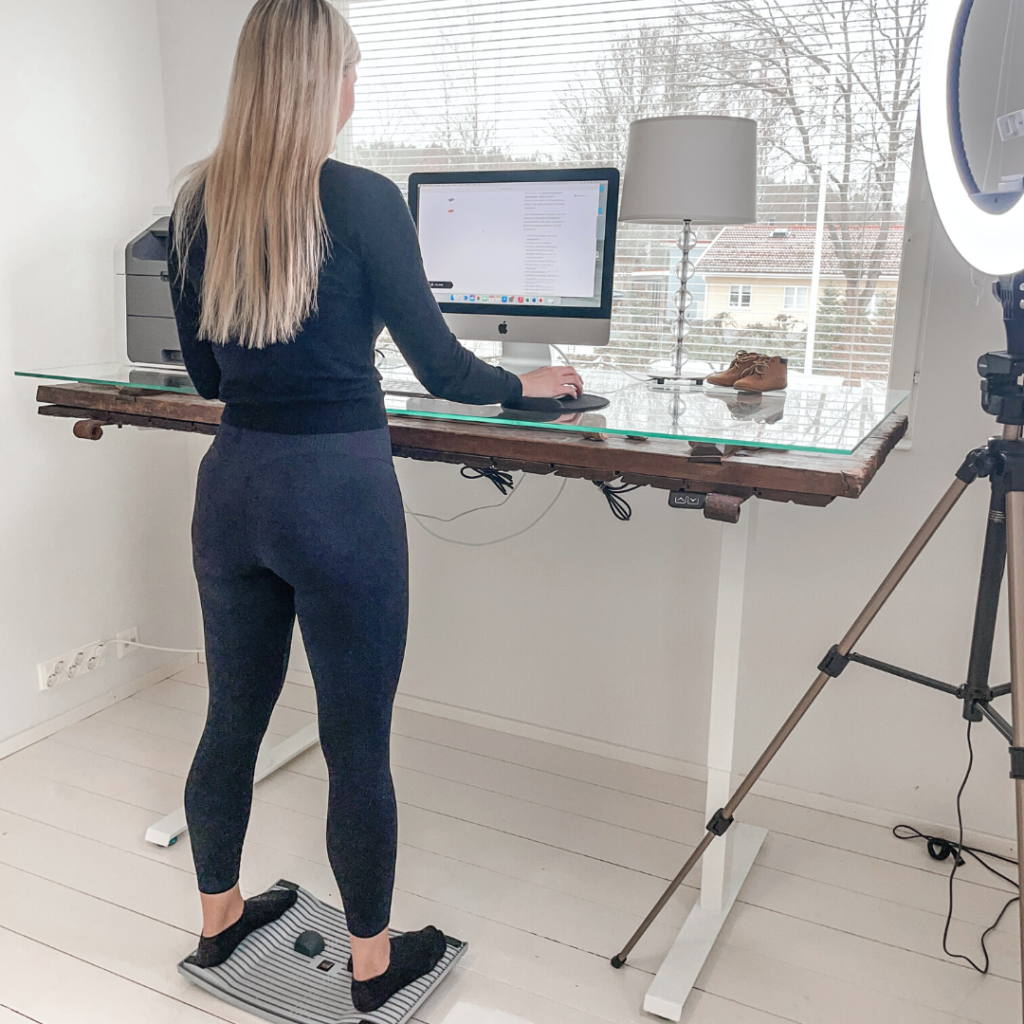Standing desks can significantly reduce back pain for many office workers by promoting better posture and reducing the prolonged static loading that occurs during sitting. By alternating between sitting and standing throughout the day, you allow your spine to change positions, distribute pressure more evenly, and engage different muscle groups. This movement helps reduce the strain on your lower back that typically builds up during extended periods of sitting. However, the benefits depend greatly on proper ergonomic setup and gradually transitioning to a standing routine, rather than standing all day, which can create its own problems.
Understanding the connection between sitting and back pain
Prolonged sitting places considerable stress on your spine and surrounding muscles, often leading to back pain. When sitting, your lumbar spine flattens, placing up to 90% more pressure on your back compared to standing. This unnatural position forces your muscles to work harder to maintain posture, leading to fatigue and tension.
For those working in a home office or traditional workplace, sitting for 8+ hours daily can be particularly problematic. Your body simply isn’t designed for such extended periods of inactivity. The lack of movement reduces blood circulation, causes muscle imbalances, and contributes to a weakened core – all factors that exacerbate back discomfort.
Modern work culture has created an epidemic of sitting-related problems. We’re seeing increasing reports of chronic lower back pain, which often develops gradually as poor posture becomes habitual and muscle imbalances worsen over time. This raises an important question: can changing our working position through standing desks offer a solution?
How do standing desks actually affect your back?
Standing desks fundamentally change how weight and pressure distribute through your spine and supporting structures. When you stand, your spine naturally maintains its curved S-shape, which is its optimal alignment for distributing forces evenly. This position engages your core muscles more actively than sitting, providing better support for your back.
The key benefit comes from alternating between positions. When you switch from sitting to standing, you’re:
- Shifting pressure points and relieving overworked areas
- Activating different muscle groups that become dormant during sitting
- Improving blood circulation throughout your lower body
- Reducing the constant compression on spinal discs
Your working position at an ergonomic desk matters tremendously. When properly set up, a standing desk encourages your body to maintain a neutral spine position with shoulders relaxed, head balanced above your shoulders, and weight evenly distributed between both feet. This balanced alignment significantly reduces the mechanical stress that contributes to back pain.
What are the proven benefits of using a standing desk?
Standing desks offer several well-established benefits for back health when used properly. The most direct impact is reduced lower back discomfort, particularly for those who already experience pain from prolonged sitting. Users typically report noticeable improvements within 2-4 weeks of regular use.
Beyond immediate pain reduction, standing desks help improve posture by encouraging proper spinal alignment. Many of us develop a forward head position and rounded shoulders from computer work, but standing naturally counteracts these tendencies when done with proper awareness.
The increased movement throughout the day – even just the micro-movements you make while standing – improves circulation and reduces stiffness. This mobility is crucial for nourishing spinal discs and preventing the muscle tightness that contributes to back pain during working position changes.
It’s important to maintain realistic expectations. Standing desks aren’t magic solutions that eliminate all back problems, but they’re valuable tools that, when combined with other good habits, can significantly improve back health and comfort during work hours.
How should you transition to using a standing desk?
Start gradually when introducing a standing desk into your routine. Begin with just 15-20 minutes of standing once or twice daily, then slowly increase duration as your body adapts. Rushing this transition can lead to fatigue, sore feet, and even temporary increases in discomfort.
Proper setup of your ergonomic desk is crucial:
- Position your screen at eye level, about an arm’s length away
- Keep your elbows bent at approximately 90 degrees when typing
- Stand with weight distributed evenly on both feet
- Consider your footwear – supportive shoes help prevent foot fatigue
For most people, the ideal approach isn’t standing all day but alternating between sitting and standing. A good starting goal is a 1:1 ratio – for every hour seated, spend an hour standing. As you become more comfortable, you might find your own preferred balance, but very few experts recommend standing for more than 75% of your workday.
Listen to your body during this transition. Some initial muscle fatigue is normal as your body adapts, but sharp pain or significant discomfort means you should adjust your approach. Remember that your standing desk is a tool to create variety in your working positions, not to eliminate sitting entirely.
What complementary habits maximize standing desk benefits?
A standing desk works best as part of a comprehensive approach to workplace wellbeing. Using an anti-fatigue mat significantly reduces foot and leg fatigue, making standing more comfortable for longer periods. These specially designed mats encourage subtle foot movements that improve circulation and reduce static loading.
Regular movement breaks remain essential even with a standing desk. Set a timer to remind yourself to walk around for 2-3 minutes every hour. These short breaks refresh circulation and prevent staying in any single position too long. Active boards promote natural movement during work, reducing the need for separate movement breaks.
Simple stretching routines targeted at the back, shoulders, and hips help counteract the tightness that develops during work. Focus particularly on:
- Gentle backward bends to counteract forward-leaning postures
- Hip flexor stretches to relieve tension from prolonged standing
- Shoulder rolls and chest openers to maintain good upper back position
In your home office, consider additional ergonomic accessories like a document holder, ergonomic keyboard, and proper lighting to create a comprehensive setup that supports good posture in both sitting and standing positions.
Key takeaways for better back health at work
Standing desks can be effective tools for reducing back pain when used as part of a thoughtful approach to workplace ergonomics. The greatest benefits come from movement variation rather than simply replacing sitting with standing. By alternating positions throughout the day, you keep your muscles engaged, improve circulation, and reduce static loading on your spine.
Proper setup is non-negotiable – an incorrectly positioned standing desk can create new problems rather than solving existing ones. Take time to adjust your equipment to your body’s specific dimensions and needs.
At Gymba, we understand that ergonomic solutions work best when they integrate naturally into your daily routine. Our products are designed to complement standing desks by encouraging natural movement throughout the day. For example, our Gymba Activation Board helps you maintain subtle movement while standing, improving circulation and reducing fatigue in the lower back and legs.
Remember that improving back health is a holistic journey. While standing desks are useful tools, they work best alongside good posture habits, regular movement or movement breaks, and appropriate strength and flexibility exercises that support your body’s natural alignment.

